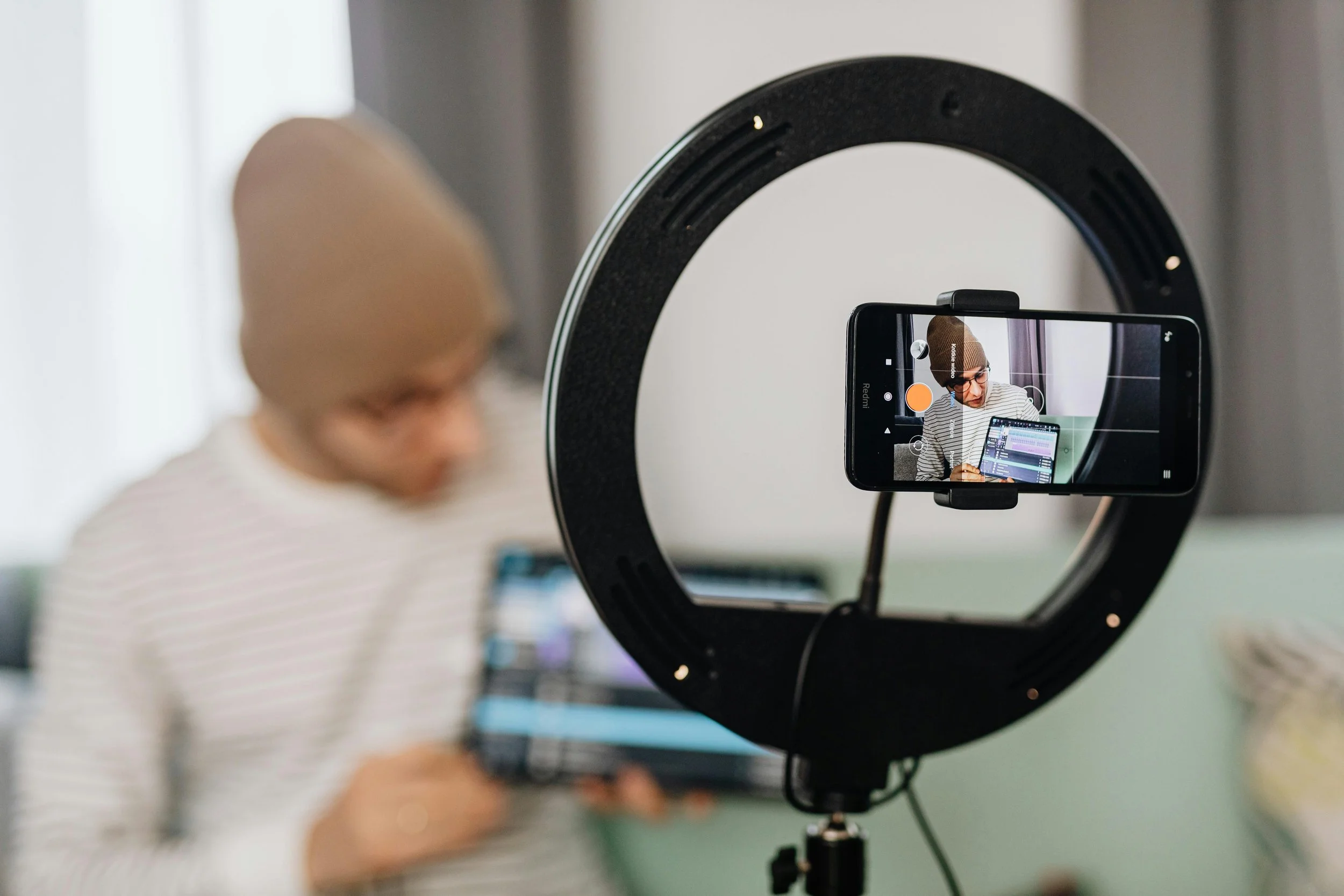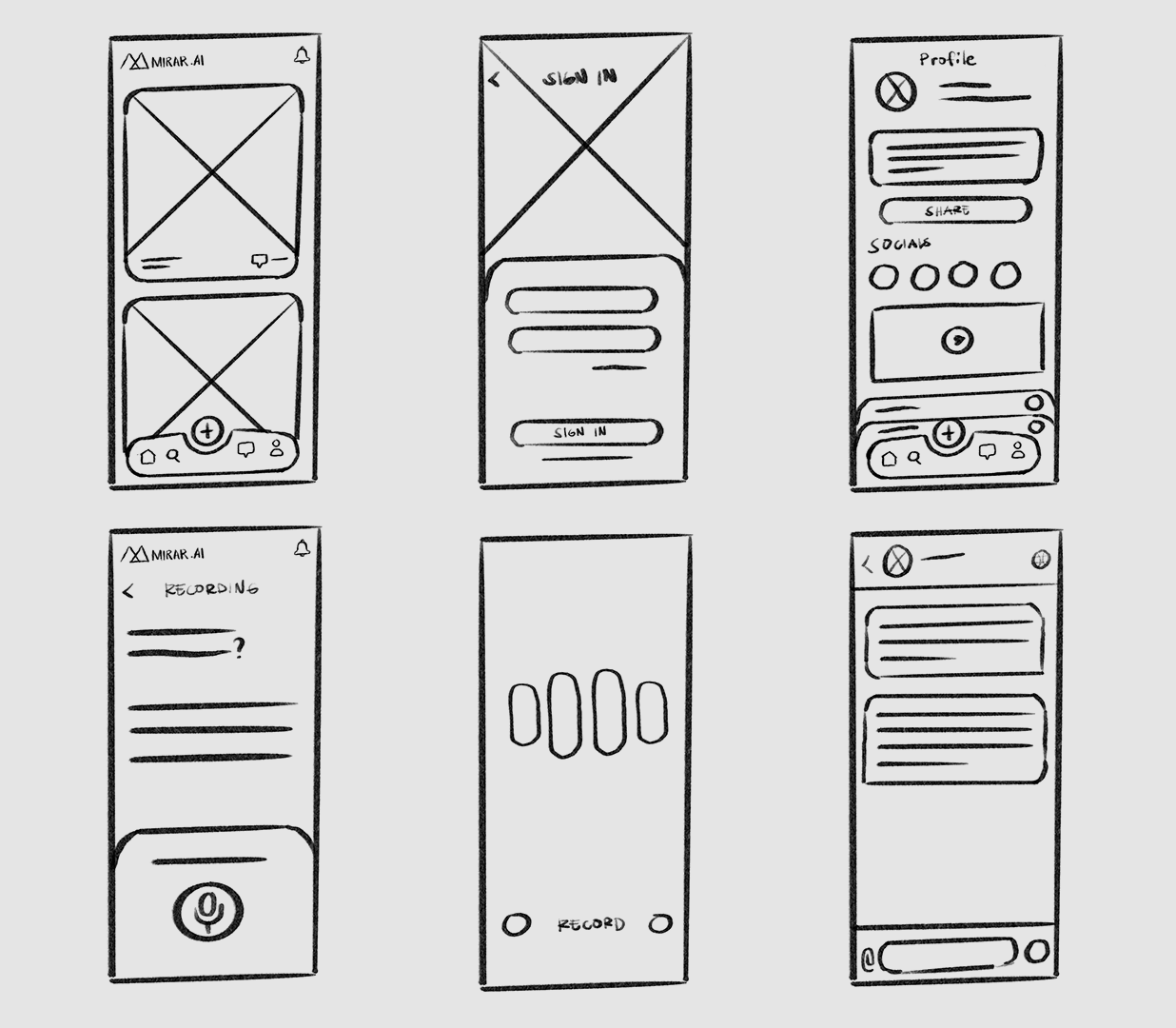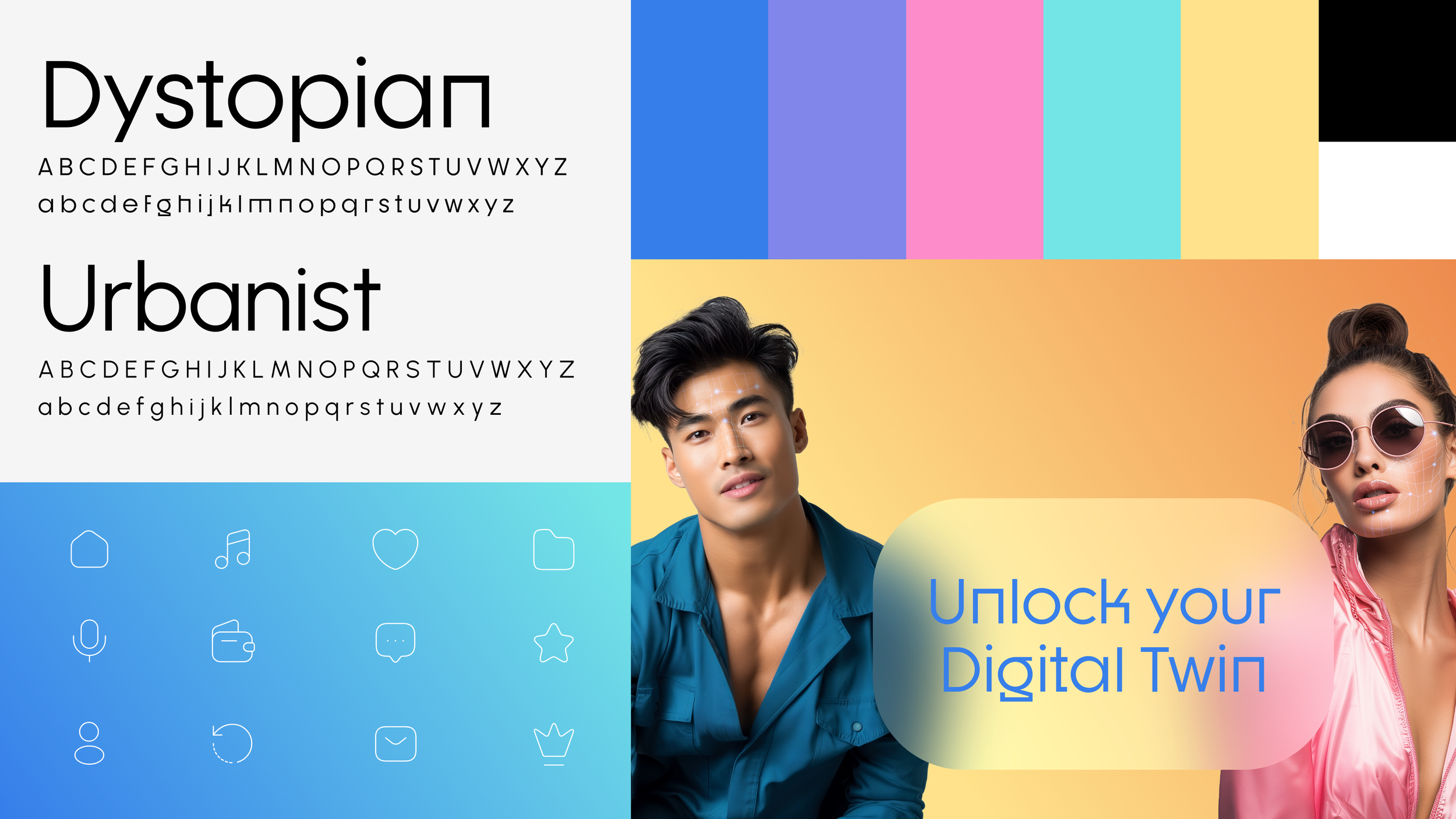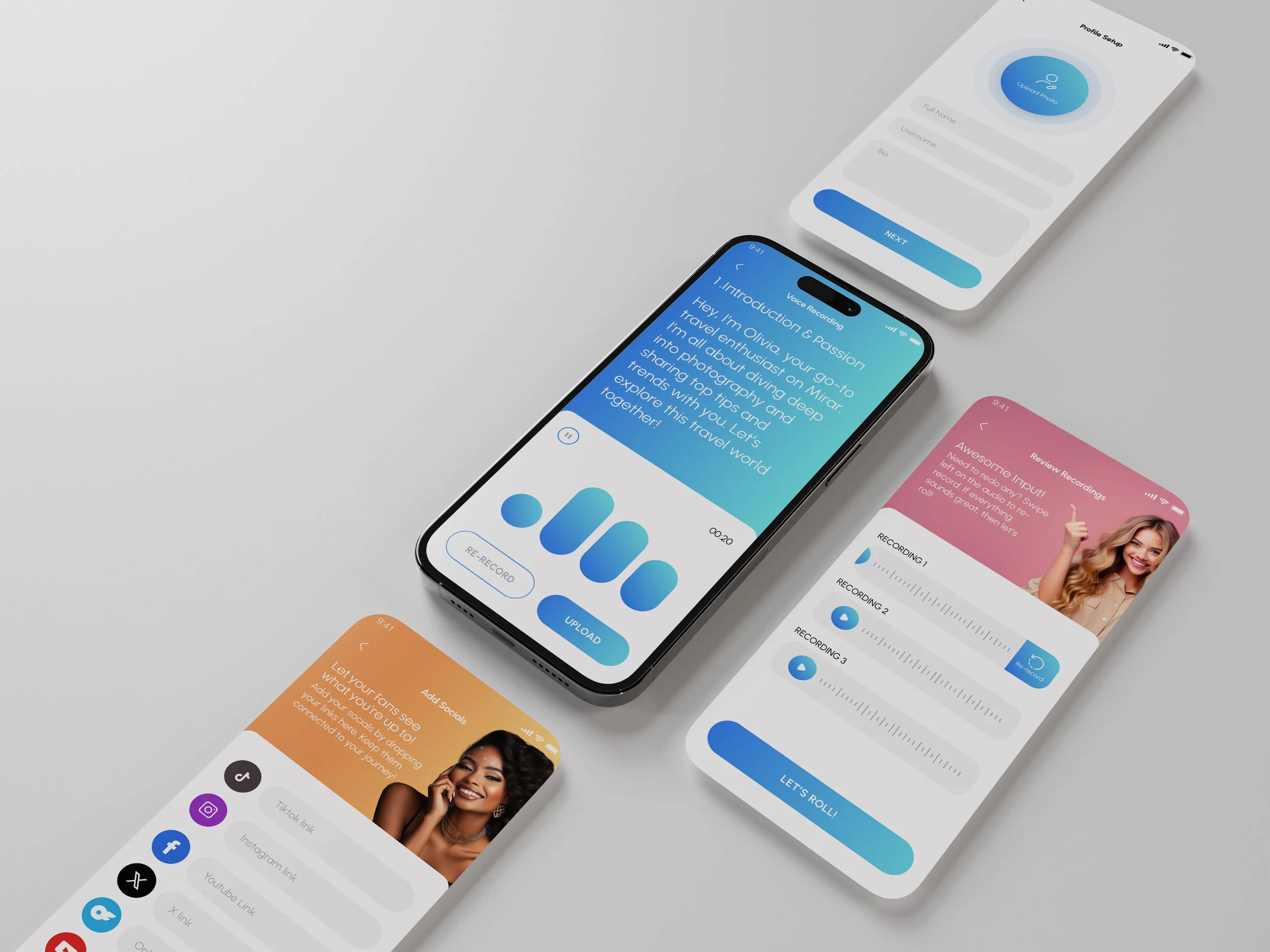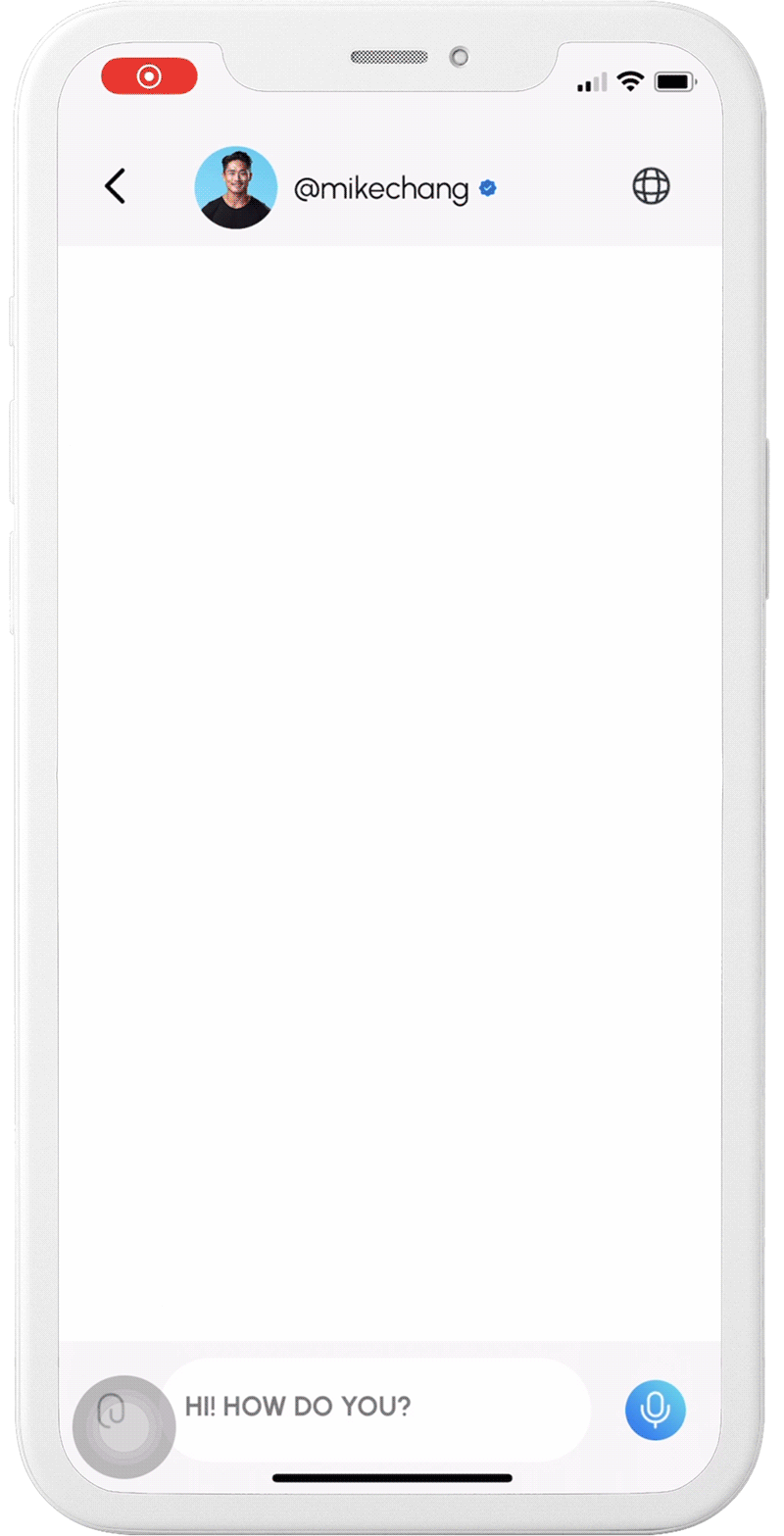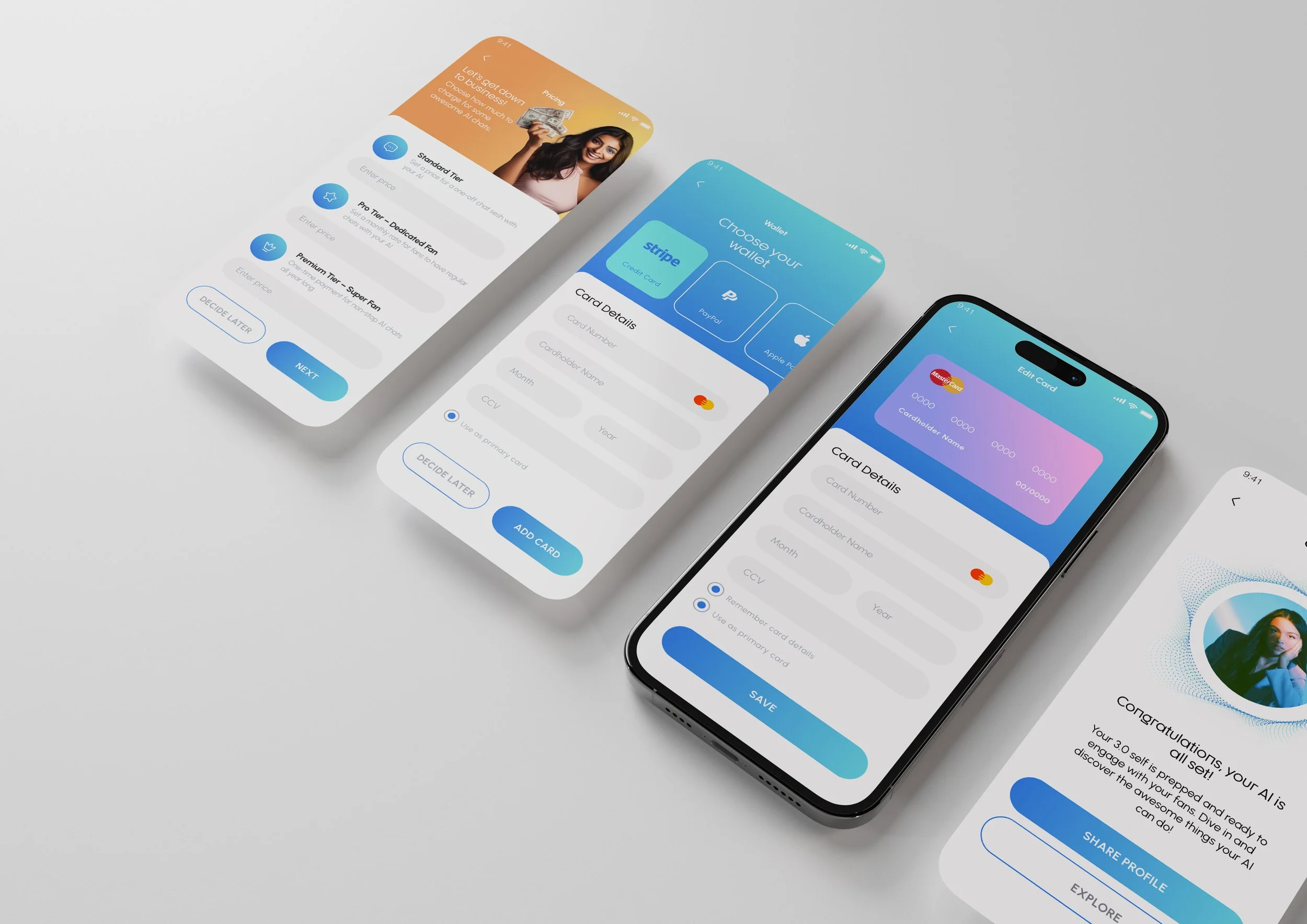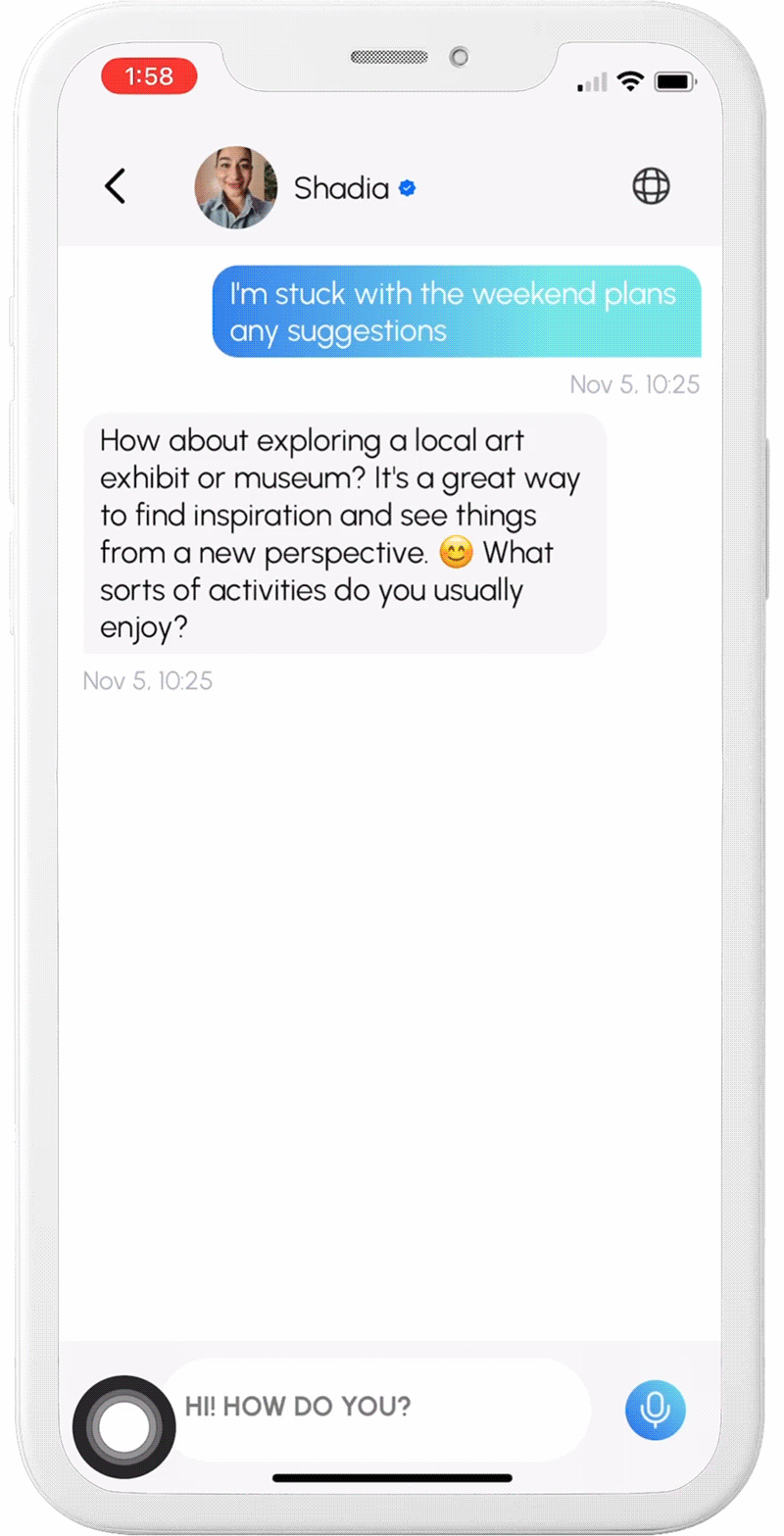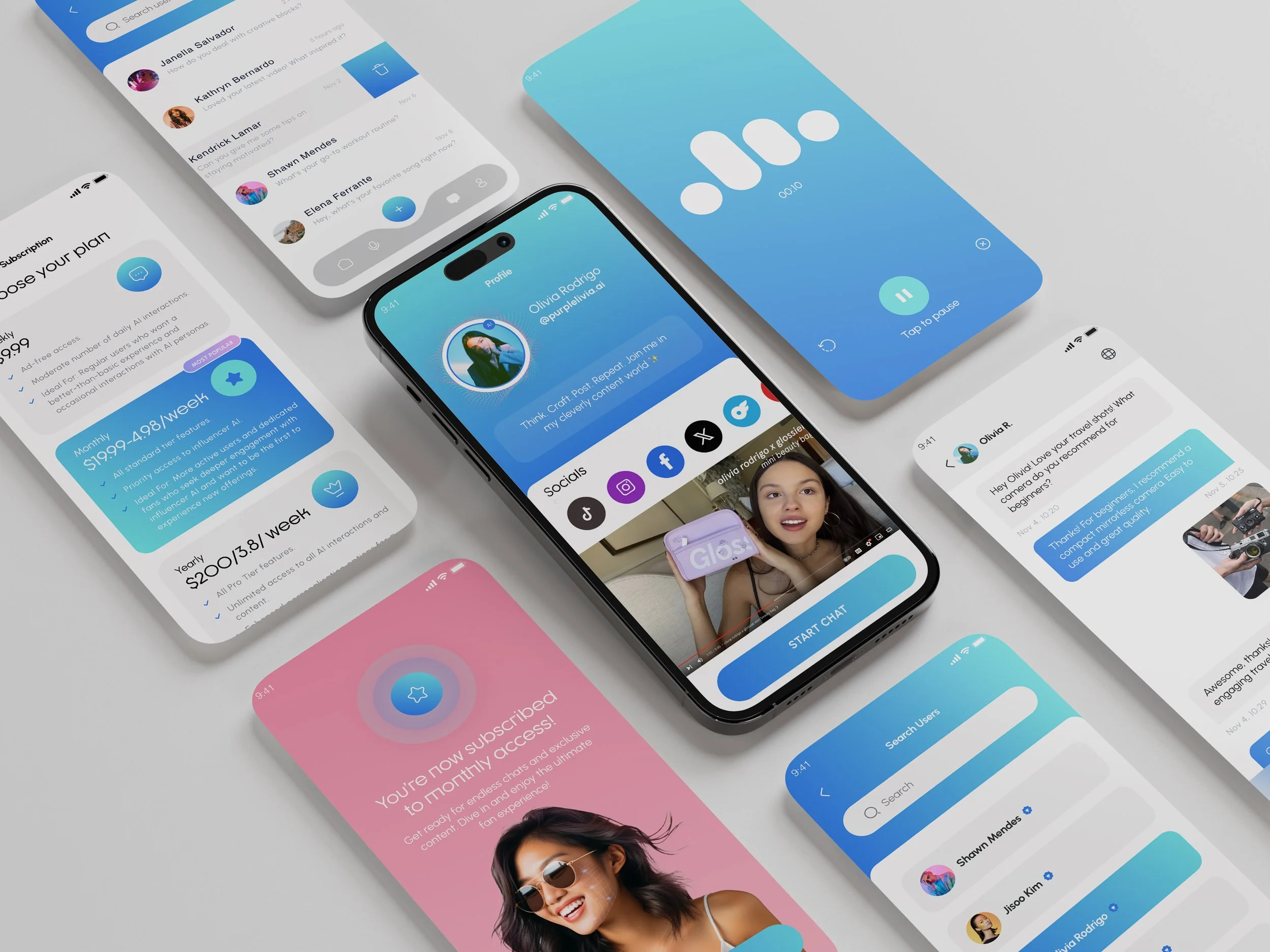
Unlock Your Digital Twin
MIRAR AI
ROLE: UI/UX DESIGNER • UX RESEARCHER
Mirar is an innovative influencer-based app where users can create AI versions of themselves by training them, allowing influencers to interact with their fans through their AI avatars and earn money. The platform aims to enhance fan engagement and provide new revenue streams for influencers.
Research Statement & Goals
The challenge faced by Mirar was twofold: low app downloads and a high dropout rate among influencers during profile completion. To address these issues, we conducted comprehensive UX research. Our goal was to identify the pain points influencers and fans encountered, understand their motivations, and develop strategies to enhance engagement and usability on the platform.
In our research, we identified two key user personas:
We then conducted user surveys to gather detailed data on user experiences and expectations, focusing on identifying their pain points.
-

Influencers
Digital-savvy individuals who love to interact with their fans but don't always have the time.
-

Fans
Users who are always online and seek authenticity in all media consumption.
Findings & Insights
-
Influencers found it difficult to create their AI versions due to a complex and time-consuming onboarding process.
-
Influencers were unsure about how to set up payment methods and pricing for their interactions.
-
Users felt that the AI avatars did not accurately reflect the influencers' personalities, leading to a lack of authenticity.
-
Fans desired more interactive and engaging features to connect with their favorite influencers.
-
The app did not support multiple languages, making it inaccessible to non-English speaking users.
Setting up the action
Using our research findings and aligning with our business objectives, we developed wireframes and low-fidelity prototypes. This led to a streamlined information architecture that emphasized easy content discovery and a simplified onboarding process.
Ideas to action
In the ideation phase, we engaged in extensive brainstorming sessions with the dev team, which resulted in the development of wireframes and prototypes for testing. This collaborative effort produced a refreshed and intuitive design system and key pages that addressed the users' pain poin
Onboarding
The onboarding process is user-friendly, allowing influencers to create their AI versions easily. They need to record their voice, answer five questions, each with predictive text options to simplify the script creation.
Voice Recording Feature
To further ease the process, a voice recording feature was added, eliminating the need for typing.
Payment
Influencers can assign their wallets and payment methods, and set their pricing for interactions.
Language Support
The app now supports multiple languages, making it accessible to a global audience.
Seamless Interaction
To enhance the user experience and foster stronger connections between influencers and fans, we designed features that facilitate seamless interactions. Our goal was to create an engaging and authentic experience for fans while ensuring influencers could efficiently manage their profiles and interactions.
-
The profile page showcases the influencer's latest content, including videos and photos, along with links to their social media accounts. This integration helps fans easily verify the influencer's authenticity and stay updated with their latest posts.
-
A voice chat feature enables fans to interact with the influencer's AI version in a more personal and authentic manner. This feature replicates real-time conversations, enhancing the connection between influencers and their fans.
-
Fans can choose from various subscription plans tailored to their preferences and budget. Each plan offers different levels of interaction and content access, allowing fans to select the option that best suits their needs and desired engagement with the influencer.
Next steps and recommendations
Following the research, we recommended ongoing user feedback sessions, A/B testing of new features, and continuous monitoring of platform analytics to refine and adapt the user experience further.
RELATED PROJECTS

